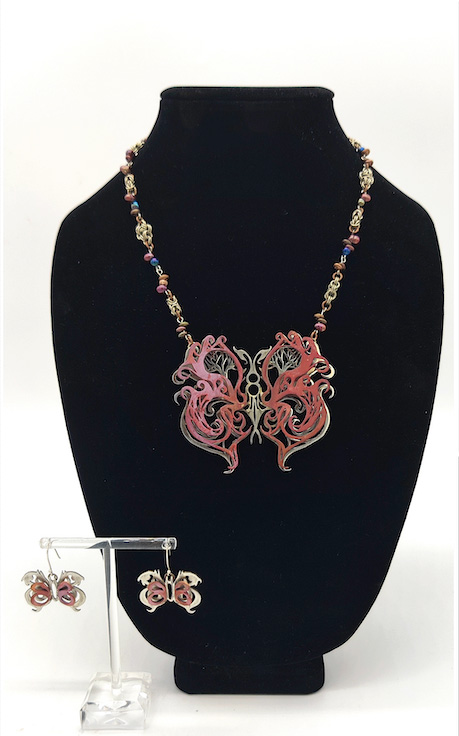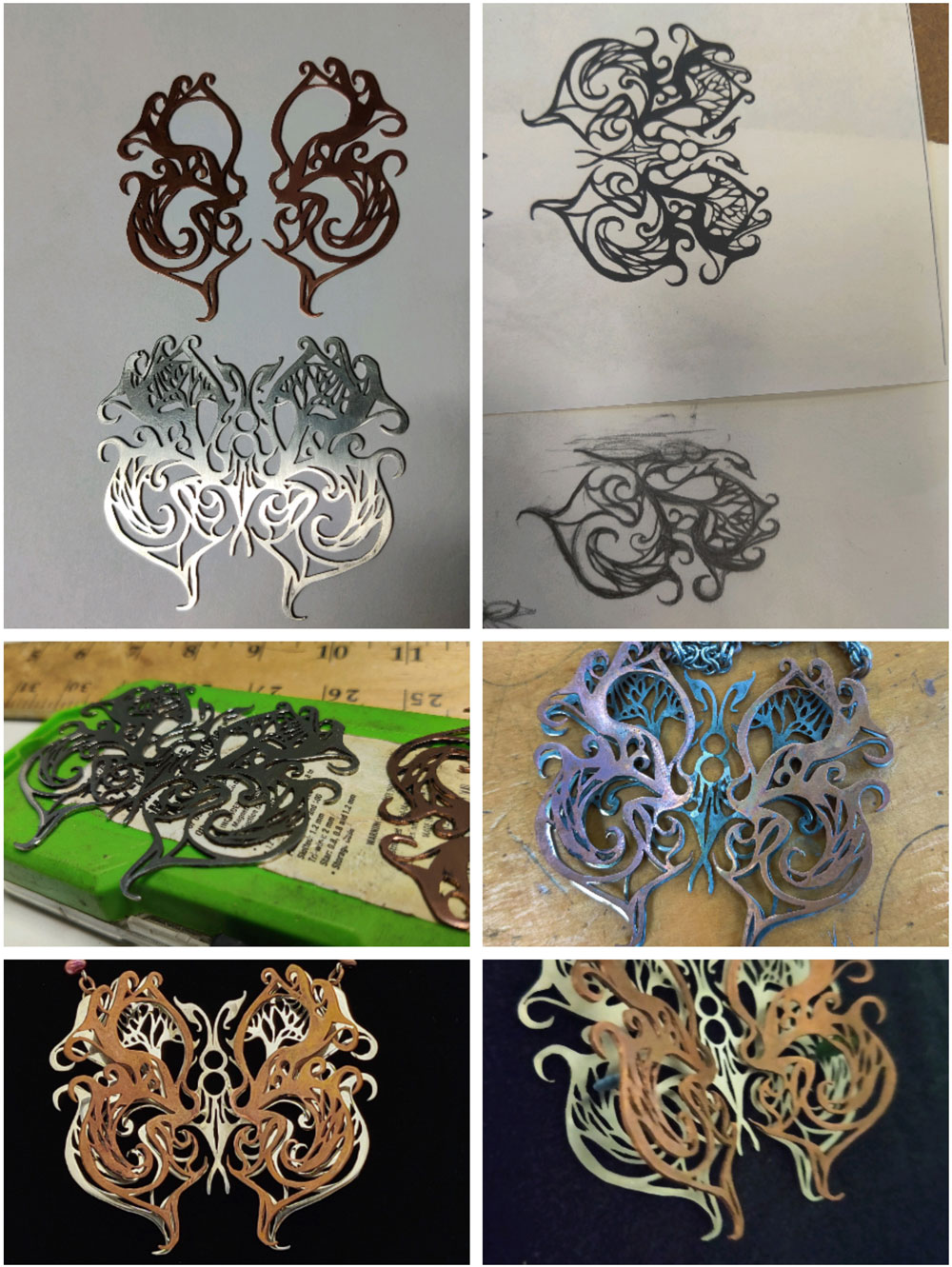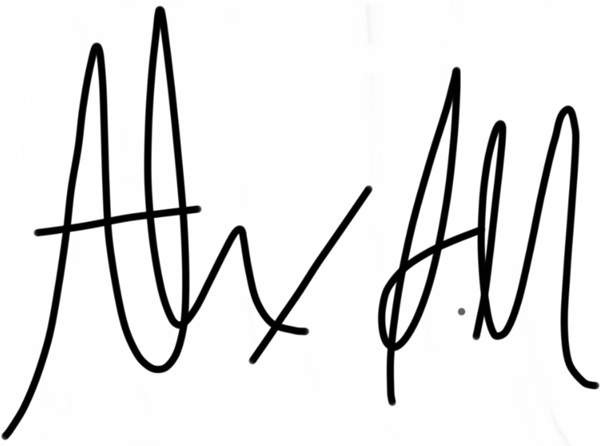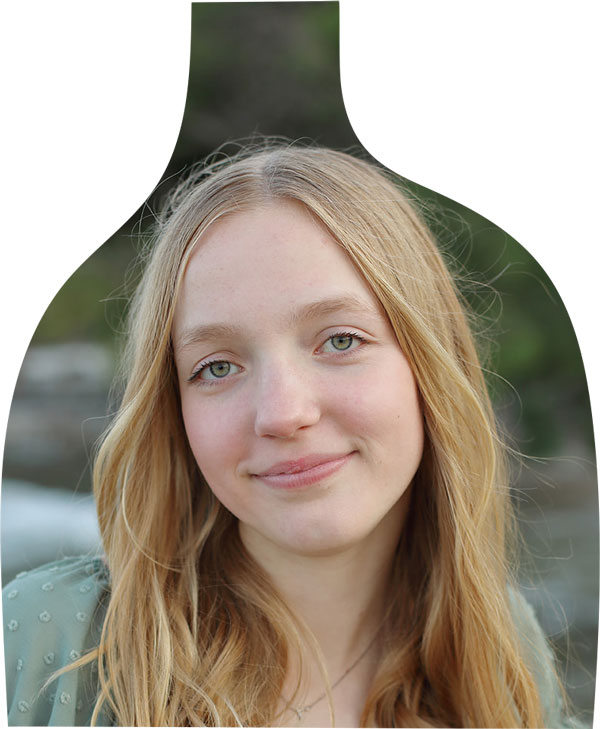
Mariposa

Height: 9" x Width: 5" x Depth: .5" | Material(s): Copper, nickel silver, and beads practice. Drilling and cutting for precision and mastery of skill. | Process(es): Drawing design, drilling and cutting it out, sanding, soldering, resanding, polishing, and assembly | Idea(s): I had greatly developed my craftsmanship through practice, especially through my cutting of formations. I developed my cutting skills until the result was perfect. | Curatorial Note: Successful use of negative space and layering. The juxtaposition of patterns, designs, and metal variations provides an activation of three-dimensional space that is wearable.
Alex Santamaria
Student statement
Student statement


AP 3-D
Arlington Heights High School
Fort Worth, TX, USA
Does your work reference or draw on a contemporary or historical artmaking style, practice, or tradition? If so, please explain.
When creating my work, I never thought of using any specific art style to create the fundamental designs. Although I made my art without any influence of “historical” or modern styles in mind, after carefully reviewing my designs, I have distinguished that my artwork closely resembles the late 19th- to early 20th-century art style Art Nouveau. My designs are created with complex intentions through long, sinuous, organic lines.
How did this artwork relate to your sustained investigation inquiry?
“Mariposa” reflects the answers to my inquiry, particularly regarding my psychological and emotional expression. Its core design embodies the intricacies of my personality. I conveyed my ideas and perceptions through my designs, producing complex and organic curved lines. The deep, warm-red color of the design evokes a sense of warmth, balanced by the cool touch of polished nickel silver.
How did you choose your inquiry?
I chose the inquiry based on what I find about myself and what I think about this world. I also based it on how I feel. I question my existence in this world and how others do as well. I love our world’s unusual wonders and the complexities that make it morally perfect. The unbalanced nature of this world is what makes it perfect. I strive to believe that humanity plays a significant part in this world as everyone has their personalities that blend and mesh well into societies and communities like colors. These are the thoughts/beliefs that led me to the inquiries that I chose.

How can I design my artwork to show my personality, my perceptions of the world, and myself? How can I illustrate my intricate identity through my work of art?
How did you practice or improve your written inquiry statement as your portfolio developed?
I have improved my inquiries when I stumbled upon many questions I have asked myself multiple times. I look into what I have questioned myself, how I felt about myself, how I thought about the world, and how I felt about other people. My emotional and mental development has impacted the outcome of my responses to my statements. I have experienced many different emotions throughout the year(s); I have felt happiness, sadness, anger, depression... Those emotional experiences have changed over the years, bringing in newer and increasingly abstract emotions that I later on impart into my work and into my portfolio.
How did your art teacher support your artistic development?
My art teacher has shown me many techniques, skills, and life lessons that have influenced me in so many ways, especially toward my art. She brought on a competitive atmosphere, which has pushed me beyond my capabilities as an artist. Ever since I have taken her class, it has made me strive to explore myself and other’s people’s work more deeply. My teacher has encouraged me to do many art competitions as my designs started to grow.

Process | Material(s): Copper, nickel silver, and beads practice. Drilling and cutting for precision and mastery of skill. | Process(es): Drawing design, drilling and cutting it out, sanding, soldering, resanding, polishing, and assembly
What is your advice to other AP Art and Design students?
Don’t shy away from expressing your true self within your work. Personality, expression, and feelings are all what make us human and what makes humanity, which you should display in your art: HUMANITY. Don't stop coloring the world with your art; the world would be colorless without it, and so would you.
Cheryl Evans-Rogers
Art/Jewelry & Metalsmithing Teacher
Arlington Heights High School, Fort Worth, TX
Teacher statement
Teacher statement
How did you support skill development AND inquiry in the AP Art and Design curriculum?
To support skill development and inquiry in my AP Art and Design class, I ensure students have a strong foundation in jewelry making techniques built into prior courses. This solid base allows them to confidently experiment and explore new ideas as they progress in AP.
How did you structure practice, experimentation, and revision into your AP Art and Design curriculum?
Most of my AP students have taken Jewelry II, III, and IV in previous years. In the lower levels, we focus on fundamental and technical skills. As they progress, they explore more advanced techniques like copper etching, stone setting, and creating glass pieces for their jewelry. In the advanced program, we introduce at least one new technique or skill each month, giving AP students the opportunity to feel truly special.
How do you support your students in the Selected Works portfolio component?
With my students' Selective Works portfolios, I encourage them to explore, experiment, and embrace change. Don't be afraid to revise-just because you liked it the first time doesn't mean it can't be even better!
What did you learn from working with your student?
My students inspire me to step out of my matrials and media comfort zone. Think beyond the usual and explore new ideas. That is what makes life and art exciting.

Dr. Justin Barrett
Arlington Heights High School, Fort Worth, TX, USA
Leader statement
Leader statement
What are you most proud of regarding your school’s AP Art and Design program, student, and teacher?
As principal of Arlington Heights High School, I am incredibly proud of our AP Art and Design program, which continues to thrive under wonderful teachers like Ms. Cheryl Evans-Rogers. Her dedication to fostering creativity and critical thinking has elevated the program to new heights, inspiring students to push boundaries and explore their artistic potential. I am especially proud of Alex Santamaria Murillo, whose exceptional work has exemplified the talent and determination of our students. Alex’s ability to communicate complex ideas through art is nothing short of remarkable, and their contributions have brought recognition not only to themselves but to our entire school community. Together, Ms. Evans-Rogers and students like Alex showcase the true spirit of Arlington Heights High School—excellence, creativity, and a commitment to achieving greatness.
What do you do to support visual arts programming in your school?
Our administration team actively supports the visual arts by attending events and exhibitions, serving as mock judges to provide constructive feedback, and celebrating student achievements through school announcements and social media.
What is your advice to other school leaders on how to support an AP Art and Design program?
I encourage other school leaders to advocate to preserve unique programs, such as Ms. Evans-Rogers’ exceptional jewelry design class, which offers students one-of-a-kind creative opportunities.

Abigail Garcia





